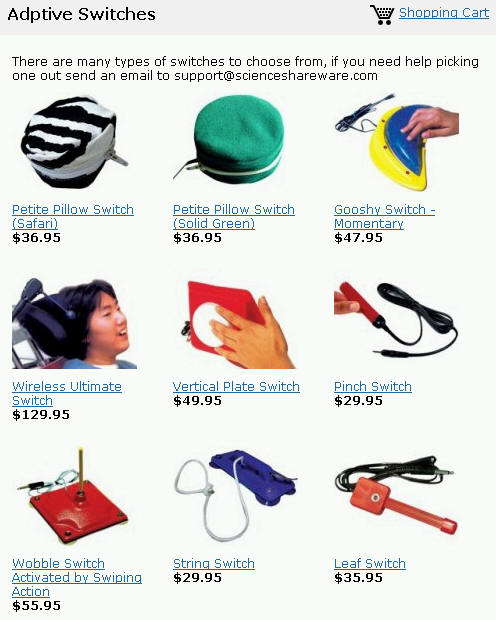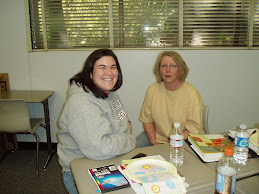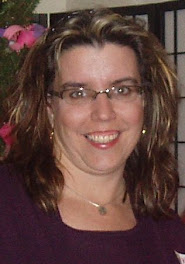Hi blog world! It's a cool and breezy Saturday night and I just got home from a walk with my family. The Red Sox beat the Yankees (twice). Life is good. School is winding down and I have started applying for jobs. I have my first phone interview this Monday. Feelings? A mixture of scared, excited, confident and nervous. I am so glad that God holds my future in His hands.
As a mom, I kind of feel like I did right before giving birth for the first time when you are so fat and uncomfortable and all you do is whine. Sure, you get the big shower and attention and laddy dah. So thats fun. But then the baby comes and life gets really crazy. Sleep? What sleep? You dont have to be an expert and pretty soon it becomes second nature. I feel like I am about to give birth to my new career and I am whining now (PACT!) but the real work hasnt even started. It will all work out but not knowing exact details is a little unnerving. I am used to having things coursed out. Ugh.
I just watched ER and feel better that Dr. Carter was scared when he started too. I am pretty sure I will not kill anyone so that's good. Balancing confidence, humility and common sense is what I need now. Bring it on!
Saturday, April 25, 2009
Thursday, April 16, 2009
Make Students Aware
www.dvusd.org/assets/pdfs/department_education/Disability_Awareness.pdf
This is a fantastic new packet that was shared in one of my courses at Chico State for making students more aware of disabilities. Hopefully it will help with some of the misunderstandings in school. Enjoy.
This is a fantastic new packet that was shared in one of my courses at Chico State for making students more aware of disabilities. Hopefully it will help with some of the misunderstandings in school. Enjoy.
Friday, April 10, 2009
WELCOME TO MY BLOG
This is a site for teachers and those of us getting ready to become teachers. I hope to give some good information about what Assistive Technology is and is not. I hope you enjoy and learn something.
ASSISTIVE TECHNOLOGY-SO MUCH MORE THAN YOU THINK!

Categories of Assistive Technology
Aids for Daily Living
self-help aids for use in activities such as eating, bathing, cooking, dressing, toileting , and home maintenance. Example: grab bars and a shower chair for bathing.
Augmentative Communication
electronic and non-electronic devices that provide a means for expressive and receptive communication for persons with limited speech. Example: using voice-output augmentative communication device for a person with limited speech ability to effectively communicate with teachers, classmates , and family members.
Computer Applications
input and out put devices, alternative access aids, modified or alternative switches, special software, and other devices that enable persons with disabilities to use a computer Example: Voice activated system for computer, allows an individual with limited use of hands to write articles without the need for a keyboard.
Environmental Control Systems
primarily electronic systems that enable someone with limited mobility or fine motor skills to control various devices such as appliances , electronic aids and security systems in his/her own room, home or other surroundings. Example: equipping a home with electronic controls for the doors, lights , television and radio to allow greater independent functioning in the home.
Home/Worksite Modifications
structural adaptations, fabrications in the home, worksite or other areas (ramps, lifts, bathroom changes) that remove or reduce physical barriers for an individual with a disability. Example: using stair glide installed in the home to have access to the first and second levels of the home for a person who has difficulty using stairs.
Prosthetics and orthotics
replacements, substitutions or augmentation of missing or malfunctioning body parts with artificial limbs or other orthotic aids (splints, braces, et.) Example: using a leg prosthesis in order to walk.
Seating and Positioning
accommodations to a wheelchair or other seating system to provide greater body stability, trunk /head support and an upright posture, and the reduction pressure on the skin surface (cushions, contour seats, lumbar supports). Example: Equipping a wheelchair with straps to prevent injury to lower body, give greater upper body support and to secure while chair is in motion.
Vision Aids
magnifiers, Braille and speech output devices, large print monitor. Example: adapting the computer at work with a large print monitor for a person with a visual impairment.
Sensory Aids for People who have a hearing impairment
telephone amplifiers, hearing aids, assistive listening devices, text telephone, visual alerting systems. Example: a person who is deaf using a text telephone for business transactions and equipping an entrance with a signal light to indicate to them someone has entered. Amplifing sounds for a person who has a hearing impairment
Wheelchair/Mobility Aids
manual and electric wheelchairs, mobile bases for custom chairs , walkers, three wheel scooters and other utility vehicles used for increasing personal mobility. Example: upgrading from a manual wheelchair to a power wheel chair allowing for greater mobility and increased independence.
Vehicle Modifications
adapting driving aids, hand controls, wheelchairs and other lifts, modified vans and other motor vehicles used for personal transportation. Example: Driving a van with adaptive control and a lift to accommodate a person who uses a wheelchair.
Resource - Pennsylvania's Initiative on Assistive Technology (PIAT) Access to Funding: A Resource Guide for Obtaining Assistive Technology Devices and Services in Pennsylvania. Institute on Disabilities/UAP Temple University Ritter Hall Annex Room 423, Philadelphia, PA 1912
What is Assistive Technology?
"Any item, piece of equipment, or product system, whether acquired commercially off the shelf, modified, or customized, that is used to increase, maintain, or improve functional capabilities of individuals with disabilities. AT service is directly assisting an individual with a disability in the selection, acquisition, or use of an assistive technology device."
Source: The US technology-related assistance for individuals with disabilities act of 1988, Section 3.1. Public Law 100-407, August 9, 1988 (renewed in 1998 in the Clinton Assistive Technology Act) - http://section508.gov/docs/AT1998.html#3
"Any item, piece of equipment, or product system, whether acquired commercially off the shelf, modified, or customized, that is used to increase, maintain, or improve functional capabilities of individuals with disabilities. AT service is directly assisting an individual with a disability in the selection, acquisition, or use of an assistive technology device."
Source: The US technology-related assistance for individuals with disabilities act of 1988, Section 3.1. Public Law 100-407, August 9, 1988 (renewed in 1998 in the Clinton Assistive Technology Act) - http://section508.gov/docs/AT1998.html#3
ASSISTIVE TECHNOLOGY
Assistive technologies enable people to communicate, receive instruction, learn, play, move about, achieve, and be independent (Blackstone, 1990). These technologies have been used to enhance the abilities of people as part of early intervention services, in educational and recreational programs, for employment, rehabilitation, and for independent living (Solarz, 1990)
According to the Technology-related Assistance for Individuals with Disabilities Act of 1988 (Tech Act), an Assistive technology device is "any item, piece of equipment, or product system, whether acquired commercially off the shelf, modified, or customized, that is used to increase, maintain, or improve the functional capabilities of individuals with disabilities." Assistive technology services are defined in the Act as "any services that directly assist an individual with a disability in the selection, acquisition, or use of an assistive technology device" (P.L. 100-407, Sec.3 1988). According to the Act, these services include;
1. evaluation of needs, providing for the acquisition of assistive technology devices by individuals with disabilities;
2. selecting, designing, fitting, customizing, adapting, applying, maintaining, repairing, or replacing, such assistive devices;
3. coordinating and using other therapies, interventions, or services with assistive technology;
4. training or providing technical assistance for an individual with disabilities; and,
5. training or providing technical assistance for professionals, employers, or other individuals who provide services to or are otherwise substantially involved in the major life functions of individuals with disabilities.
References
Blackstone, S. (1990). Assistive technology in the classroom: issues and guidelines. Augmentative Communication News, 3(6).
Public Law 100-407. Technology-Related Assistance for Individuals with Disabilities Act of 1988.
Solarz A.L. (1990) Rehabilitation psychologists: A place in the policy process? American Psychologist, 45(6), 776-770.
(Note: this description has been taken directly from grant proposal prepared by the Institute on Disabilities, the University Affiliated Program at Temple University.)
According to the Technology-related Assistance for Individuals with Disabilities Act of 1988 (Tech Act), an Assistive technology device is "any item, piece of equipment, or product system, whether acquired commercially off the shelf, modified, or customized, that is used to increase, maintain, or improve the functional capabilities of individuals with disabilities." Assistive technology services are defined in the Act as "any services that directly assist an individual with a disability in the selection, acquisition, or use of an assistive technology device" (P.L. 100-407, Sec.3 1988). According to the Act, these services include;
1. evaluation of needs, providing for the acquisition of assistive technology devices by individuals with disabilities;
2. selecting, designing, fitting, customizing, adapting, applying, maintaining, repairing, or replacing, such assistive devices;
3. coordinating and using other therapies, interventions, or services with assistive technology;
4. training or providing technical assistance for an individual with disabilities; and,
5. training or providing technical assistance for professionals, employers, or other individuals who provide services to or are otherwise substantially involved in the major life functions of individuals with disabilities.
References
Blackstone, S. (1990). Assistive technology in the classroom: issues and guidelines. Augmentative Communication News, 3(6).
Public Law 100-407. Technology-Related Assistance for Individuals with Disabilities Act of 1988.
Solarz A.L. (1990) Rehabilitation psychologists: A place in the policy process? American Psychologist, 45(6), 776-770.
(Note: this description has been taken directly from grant proposal prepared by the Institute on Disabilities, the University Affiliated Program at Temple University.)
Sunday, March 29, 2009
Wow! We are so close but it is so far at the same time. For me, the credential program has felt like bootcamp. Although I feel as if my brain and body can't take anymore, I feel like I am a different person going out than coming in. I think the most uncomfortable part for me is the not knowing. I have grown accustomed to schedules, and classes and syllabusses and rubrics. Now WHO KNOWS? I wonder where (if) I will be working... and starting a new job is always stressful. Will the people be nice? Will they expect me to know what I am doing? Do I know what I am doing? I am sure we will all be OK... just need chocolate. hang in there 14!
Subscribe to:
Posts (Atom)

What is Adaptive or Assistive Technology and What Does it Mean to Me?
Assistive or Adaptive Technology commonly refers to "...products, devices or equipment, whether acquired commercially, modified or customized, that are used to maintain, increase or improve the functional capabilities of individuals with disabilities..."
Assistive Technology Act of 1998
Assistive Technology Products can enable people with disabilities to accomplish daily living tasks, assist them in communication, education, work or recreation activities, in essence, help them achieve greater independence and enhance their quality of life.
Assistive Technology devices can help improve physical or mental functioning, overcome a disorder or impairment, help prevent the worsening of a condition, strengthen a physical or mental weakness, help improve a person's capacity to learn, or even replace a missing limb.
Assistive Technology Services support people with disabilities or their caregivers to help them select, acquire, or use adaptive devices. Such services include functional evaluations, training on devices, product demonstration, and equipment purchasing or leasing.
Assistive Technology Act of 1998
Assistive Technology Products can enable people with disabilities to accomplish daily living tasks, assist them in communication, education, work or recreation activities, in essence, help them achieve greater independence and enhance their quality of life.
Assistive Technology devices can help improve physical or mental functioning, overcome a disorder or impairment, help prevent the worsening of a condition, strengthen a physical or mental weakness, help improve a person's capacity to learn, or even replace a missing limb.
Assistive Technology Services support people with disabilities or their caregivers to help them select, acquire, or use adaptive devices. Such services include functional evaluations, training on devices, product demonstration, and equipment purchasing or leasing.
Assistive Technology is For Everyone
Assistive Technology (AT) is defined in the Individuals with Disabilities Education Act (IDEA) as, "...any item, piece of equipment, or product system... that is used to increase, maintain, or improve functional capabilities of individuals with disabilities." In other words, AT can be anything - from a pencil grip to a computer, a magnifying glass to a wheelchair - that helps a person perform a daily task that might otherwise be very difficult or impossible. AT accomodations can be written in to a child's Individualized Education Plan (IEP); for example, if a child has a difficult time typing on a regular keyboard, ergonomic or large-key keyboards may benefit the child and this could be written in to an IEP. AT should not be confused with Universal Design for Learning (UDL). UDL is when an entire curriculum is created and designed to differentiate instruction for every student, including students with disabilities, English Language Learners, and gifted and talented students.
Sites I Like
Welcome to my Blog
This is my blog... I am new to this world of blogology but am willing to give it a shot.




